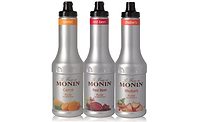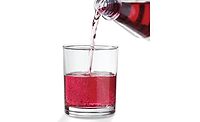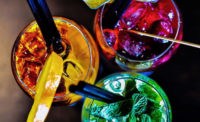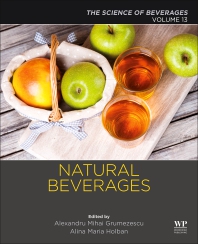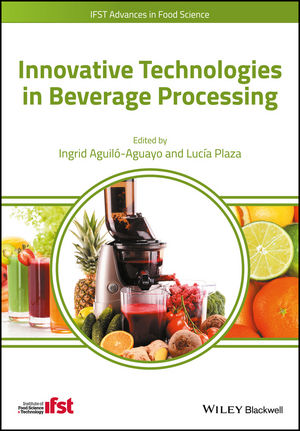Natural colors uphold clean label trend
Switch to natural colors must be done in authentic way, experts note

For years, consumers have been interested in clean beverage labels with ingredients they recognize and understand. Thus, it’s no surprise that natural colors are in demand. However, what’s not always obvious is how much the color of a beverage plays into its marketing — both on and off the shelf.
As the saying goes, “You only get one chance to make a first impression.” For beverages, this is crucial because color can significantly affect the initial perception of taste, which leads to a consumer picking up the product or not, explains Christiane Lippert, head of food marketing for Lycored, Orange, N.J.
Off the shelf, social media usage among millennials is putting even more pressure on beverage aesthetics, she notes.
“To this end, consumers increasingly base their purchase decisions on the visual appeal of a product,” Lippert explains. “They want to buy into an experience rather than just a product, meaning the marketing of items is critical.”
Visual excitement creates an opportunity to share a “like-worthy experience,” which appeals to connected consumers, adds Maria Jose Alarcon, product experience marketing manager for colors with ADM, Chicago.
“[These consumers] are also more comfortable voicing what they want and need from their food and beverage products,” she notes. “We’ve heard them loud and clear: colors from natural sources are key.”
In fact, more than 80 percent of new product launches worldwide include natural color, says Meghan Fox, marketing specialist for St. Louis-based Sensient Food Colors, citing 2019 data from Chicago-based market research firm Mintel. She adds that the clean-label trend has led to a nearly 50 percent increase in new product launches with natural colors in North America, according to Mintel data.
Today’s consumers are demanding easy-to-read ingredient statements and showing increased interest in plant-based products, creating a need for botanical colors, Fox says.
Retailers are even supporting the move from synthetic to natural colors, notes Jeff Greaves, president of Food Ingredient Solutions LLC, Teterboro, N.J.
“Pressure from retailers such as Whole Foods, Trader Joe’s and Kroger is pushing more customers to move from artificial to natural colors,” he says.
The trend toward natural colors is sweeping the beverage industry, experts say. However, if there’s one category that’s least affected, it’s traditional carbonated soft drinks (CSDs), says Alex Sirosky, technical service manager for Sensient Food Colors.
Citing 2019 Mintel data, he says “all-natural” product claims account for only 3 percent of new CSDs in North America. Nevertheless, Sensient offers a fruit juice option for brown shades and carrot-based colors for strawberry or cream sodas, when interest in the category arises.
However, caramel color is generally the colorant of choice in the CSD category, notes Brian Sethness, executive vice president of sales and marketing for Sethness Roquette, Skokie, Ill.
“Because of the low pH of most carbonated beverages, Class IV caramel colors are commonly used because of their acid stability,” Sethness explains. “In addition to providing excellent reddish to brown hues, caramel color can enhance the foaming characteristics, mouthfeel and flavor of soft drinks.”
Although caramel color has been a long-time favorite in the CSD category, it’s still being impacted by trends for non-GMO and organic ingredients — especially in the tea category, Sethness says.
The company now produces 11 Class IV Non-GMO Project Verified caramel colors, he says. Even though Class I caramel colors can only reach a certain level of darkness, they have become the fastest-growing segment of caramel colors because of their ability to meet consumer demand for clean labels, he adds.
Authentic use of color
Although the demand is there, it’s often not enough to simply switch from synthetic to natural colors. Experts note that natural colors must be used in the right way.
For instance, beverages with bold, bright colors are typically perceived as artificial, says Roland Beck, head of business unit colors for Darmstadt, Germany-based Döehler.
“When a company switches its portfolio to natural colors because of brand repositioning or the launch of a natural brand extension, the most successful strategy has been to use cloudy, more muted colors that make the final product seem more natural and closer to juice,” he explains. “Another successful strategy we have seen in recent years is the front labeling of the composition of juice drinks, thus avoiding having to label colors as additives.”
For instance, an apple/cherry juice uses the cherry juice to impart color, but because the product is already labeled on the front of the package as a mixed apply/cherry juice drink, there is no need to declare a color in the ingredient list, Beck explains.
Beck also advises keeping the color of a beverage as close to the naturally occurring shades of the foods in the product. For example, instead of using a bright synthetic blue for a blueberry drinkable yogurt, use a purple shade of black carrot, he explains.
Natural color challenges
Of course, making the switch from synthetic to natural isn’t always easy. Synthetic colors generally are known for being cost effective; predictable in shade and performance; and stable under various processing and storage conditions, Sensient Food Colors’ Sirosky says. These accomplishments are no small feat.
In contrast, natural colors have inherent characteristics that can limit their use as colorants in beverages, ADM’s Alarcon says. These include low color strength; thermal, light and pH instability; incompatible solubility; organoleptic impact; and tendency to oxidize, she notes.
“A wide range of factors — including pH, packaging, base color, processing conditions, temperature and shelf life — can also impact stability and performance of naturally derived colors in a particular application,” Alarcon says.
To address these issues, ADM offers a patented clear emulsion technology, which provides stability to natural colors in a wide range of beverage applications, she says.
“The technology enables us to transform intrinsic solubility of natural raw materials into easy-to-use oil-in-water and water-in-oil color emulsions to allow naturally non-polar colorants to be used in water systems and vice versa,” Alarcon explains. “Our technology allows the mixture of two or more immiscible liquids, provides heat-light stable colors without opacity, and prevents separation during shelf life in finished applications.”
Food Ingredient Solutions’ Greaves adds that pH and stability challenges can be addressed by managing a beverage’s formulation.
“Natural colors’ shade can change with pH, so pH needs to be controlled,” he explains. “Stability can be affected by ascorbic acid and metal ions. Ascorbic acid helps stabilize carotenoid colors like beta carotene, but excessive amounts destabilize anthocyanin colors like grape. Divalent and trivalent metal ions cause otherwise stable anthocyanin colors to fade rapidly. This can be avoided in unfortified products by using [reverse osmosis] or [deionized] water.”
Another challenge that fruit- or vegetable-based natural colors present is their flavor impact on the finished product, says Jody Renner-Nantz, applications manager of science and innovation for DDW, The Color House, based in Louisville, Ky. As a solution, Renner-Nantz notes: “DDW has developed Amaize Red, an anthocyanin derived from conventional or organic purple corn with low flavor impact even at higher use rates for berry-like beverages.”
To tackle unwanted flavor impact, Sensient offers its Pure-S range, which uses gentle purification technologies to reduce or eliminate offnotes, Sirosky says. This creates bold colors while maintaining pure and simple ingredients, he adds.
True blue
Arguably the most vexing challenge for natural color suppliers is creating a natural blue that withstands formulation challenges. This is especially difficult because blue from spirulina extract and green from sodium copper chlorophyllin are not approved for ready-to-drink beverages in the United States, DDW’s Renner-Nantz says.
Yet, color suppliers continue to innovate with solutions. ADM, for instance, offers a patented acid, light and heat stable blue color derived from huito fruit juice, sourced from the Amazon region of Peru, ADM’s Alarcon says. This development makes it possible for the company to create a range of natural shades of blue, green, purple and brown, she says.
Likewise, Sensient Food Colors offers a proprietary natural blue vegetable juice that is heat, light and acid stable, enabling the company to deliver a range of blues, purples and greens across various applications, Sirosky says.
Improvements and Innovation
Despite the challenges facing natural colors, they’ve come a long way in the past few years.
“Natural colors are now achieving a level of brightness and stability that, some years ago, was only thought possible with synthetic colors,” says Christian Benetka Uher, business development manager for Döehler. “Having learned to better understand the structure of natural colors and their interaction with other ingredients in food and beverage systems, we are able to develop better color formulations for the final application.”
Plus, by controlling the process from the farm to the final product, suppliers can reduce the cost-in-use of natural colors to be competitive with some synthetic colors, Benetka Uher says.
In addition to reducing cost, vertical integration allows full traceability of ingredients, which is beneficial for companies looking to follow clean-label guidelines, Lycored’s Lippert says.
GNT USA Inc. adds that its vertically integrated supply chain provides manufacturers with a consistent and steady supply of crops, says Jeannette O’Brien, vice president of the Tarrytown, N.Y.-based company. GNT’s Exberry colors are derived from fruits and vegetables grown by GNT’s select group of farmers and are non-GMO, halal, vegan, organic compliant and kosher, she says. Some colors also are certified organic.
Most recently, GNT developed a new range of Exberry liquid and powdered red colors without sugar ingredients.
“They offer higher color intensities and contain just two raw materials, helping food and beverage manufacturers achieve shorter, cleaner ingredient lists,” O’Brien says. “Available globally, the new reds deliver colors that are 50 percent more intense, which means they can be used in lower dosages to achieve the same effect, resulting in reduced cost-in-use.”
One of Lycored’s most notable innovations is natural colors that can extend the shelf life of a beverage by as long as 12 months, Lippert says. This is especially important for sustainable packaging, she notes.
“Many beverage manufacturers want to reduce the level of packaging used for positive impact on both costs and sustainability targets,” Lippert says. “To do this, stable color solutions that will survive light and chiller cabinet displays are crucial to product shelf life.” BI
Looking for a reprint of this article?
From high-res PDFs to custom plaques, order your copy today!






